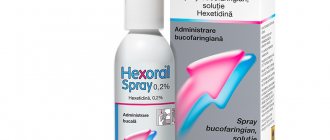Types of veterinary drugs for pain
Cats differ from humans and most other domestic animals in their response to pain medications.
The list of approved products that do not have a high toxic effect on your pet is very narrow. Types of analgesics used in veterinary medicine and allowed for cats:
- Narcotic. Prescribed only under the supervision of a veterinarian in exceptional cases - in case of severe injuries and oncological pathologies. These are Omnopon, Fentanyl, Tramadol, Codeine.
- Non-steroidal anti-inflammatory drugs (NSAIDs). Unlike the first group, they are not addictive and not only relieve pain, but also have a therapeutic effect. In acute attacks they are ineffective. These are Ketonal, Ketofen, Quadrisol, Rimadyl, Meloxicam, Vetalgin.
- Other. Some medications intended for treating humans are also suitable for cats. These are Papaverine in the form of injections, Baralgin, Pentalgin, and some others as prescribed by a doctor.
What is the best analgesic after sterilization?
Veterinarians recommend giving male cats painkillers after castration. The wound after strip surgery takes quite a long time to heal. And in order to alleviate the animal’s condition, you need to relieve pain with medications for the first time.
Most often, after sterilization, the following are prescribed:
- "Rimadyl";
- "Ketofen";
- "Ketonal".
The drug “Loxicom” is also often used. This is an oral suspension with the active substance meloxicam.
All of these drugs belong to the group of non-steroidal drugs.
Can a cat be given Analgin?
Veterinarians do not give a clear answer to this question. Some experts prescribe an injection of Analgin-Diphenhydramine to reduce high fever, and the animal tolerates it normally.
In other cases, an unfavorable reaction to the drug is noted. Drooling, vomiting, diarrhea, convulsions, even death. Presumably, such side effects are caused by the active substance – Metamizole (Noramidopyrine). This is a non-steroidal anti-inflammatory drug that has special antispasmodic properties, characterized by increased salivation (salivation).
The use of Analgin, and indeed any “human” antispasmodics, is contraindicated in any animals due to its toxic effect on the bone marrow, kidneys and liver. By the way, Analgin is also excluded from human medicine; it is replaced with antispasmodics of new generations.
But I would like to note that this is only one of the opinions of veterinarians. Others insist that a one-time administration of Analgin will not cause harm. At the same time, everyone agrees that Aspirin, Paracetamol and any other “human” antipyretics are deadly for cats.
Castration of a cat painkillers
Castration, like sterilization, is a very unpleasant and painful procedure for a pet. At first the animal is depressed and loses its appetite. It is at this time, that is, in the first week after surgery, that the pet should be given analgesics. At the veterinary hospital, the doctor tells how to numb the cat. Most often the following medications are used for these purposes:
- Suspension "Loxicom". It is produced with different concentrations of the active substance: 0.5 and 1.5 mg/ml. On the first day after castration, 0.1 mg/kg is prescribed. On the second day, the cat is given 0.05 mg/kg.
- "Rimadyl." Produced in tablets of 20 and 50 mg. The pills taste like liver, so the animal eats them without difficulty. On the first day, a dosage of 4 mg/kg is given, after a week of treatment the dose is reduced to 2 mg/kg. A 20 mg tablet is designed for an animal weighing 5 kg.
- "Ketofen." A 1% solution is prescribed at a dosage of 0.2 ml/kg. The course lasts from one to three days.
- "Ketonal". For injection, 0.2 ml of the drug is diluted with 1 ml of saline solution. The resulting volume is calculated for an animal weighing 5 kg. Injections are given subcutaneously once a day.
The painkiller helps the cat recover. Improves his well-being and shortens the animal’s rehabilitation period.
Causes and symptoms
A number of pathologies in cats are accompanied by pain. It worsens the animal’s condition and its well-being. Negatively affects the pet's lifestyle. A cat may experience pain due to the following diseases:
- oncology;
- surgery and recovery period after it;
- injuries, damage to internal organs, ligament rupture, dislocations, bruises and fractures;
- renal failure in a chronic form of development;
- inflammatory processes of internal organs, this may be diseases of the pancreas (pancreatitis), disruption of the urinary system, otitis media and endometritis;
- peritonitis, as well as dilated stomach syndrome;
- colic both in the liver and in the liver;
- pathologies of the nervous system;
- toothache, especially when tooth enamel is destroyed.
What symptoms indicate pain? First of all, the cat's behavior changes. He becomes more aggressive and nervous. Anxiety appears. The pet begins to meow pitifully. When the disease begins to progress, apathy and lethargy are observed. The animal may hide in a corner and avoid all communication with the owner.
Pain syndrome may be indicated by loss of appetite, rapid pulse and rapid breathing. The pain is often accompanied by salivation and stiffness of movement. To relieve pain, the pet can take atypical positions.
The owner must pay attention to the animal’s unusual behavior in a timely manner and take timely measures. Is it possible to give cats painkillers on their own, without a veterinarian's prescription? The answer is negative
After all, many analgesics that are used to treat humans cannot be given to cats due to their high toxicity. The doctor will not only prescribe a suitable painkiller for the cat, but will also determine the correct dosage. If necessary, he will prescribe additional therapy.
When to give your cat pain medication
Painkillers are given to animals in two cases: to relieve symptoms or to prevent their occurrence. In any case, the medicine is prescribed by a veterinarian. Pain is the body's reaction to an irritant. Each predator experiences suffering differently.
But there are a number of manifestations characteristic of all four-legged animals:
- a sharp change in behavior, the animal is too active or, on the contrary, passive;
- avoids communication, hides, shows aggression, hisses, scratches, tries to bite;
- restlessness: looking for a place, when he finds it he begins to “twirl”, trying to lie down comfortably;
- refusal to eat, does not even react to your favorite treat;
- ignores the litter box, trips to the toilet are accompanied by meowing;
- salivation, shortness of breath, rapid heartbeat.
Analgesics are prescribed in complex therapy for the following diseases:
- injuries, bruises, muscle strains;
- inflammatory processes in soft tissues;
- diseases of the joints and spine (arthritis, arthrosis);
- oncology;
- pathologies of the urinary system (urolithiasis, cystitis);
- pain syndromes after operations;
- abdominal muscle spasms caused by gastrointestinal diseases (constipation, bloating);
- neuralgia.
When is pain medication needed?
Pain syndrome can be acute and chronic. In case of severe injury or cancer, delay in providing assistance to your pet can lead to painful shock and even death.
Typically, pain in cats is accompanied by:
- Oncological diseases.
- Injuries - superficial extensive wounds and cuts, fractures of the paws and spine, bruises and torn ligaments.
- Postoperative period after surgery.
- Recovery after castration or sterilization.
- Chronic diseases in the acute stage - pancreatitis, cystitis, urolithiasis, others.
- Kidney or stomach colic.
- Disruption of the nervous system.
- Tooth and jaw pain (usually when enamel is destroyed).
How to relieve pain in an animal with urolithiasis
Unfortunately, urolithiasis, or urolithiasis, is a very common occurrence in cats. First of all, this disease is associated with improperly organized nutrition of the animal. This includes water quality, an excess of minerals in the feed, and overeating. Also, urolithiasis can be caused by a genetic predisposition or appear as a complication after infectious diseases, accompanying ulcers, colitis, gastritis.
One way or another, in addition to the main therapy aimed at removing stones, Analgin and Ortofen are most often prescribed subcutaneously for urolithiasis. It can also be drugs such as Lidocaine, Baralgin, Novocaine. Antispasmodics (“No-shpa”, “Drotaverine”, “Papaverine”, “Spazgan”) are usually added to analgesics. In especially severe cases, novocaine blockade in the lumbar region may occur.
Narcotic analgesics
Whenever a pet experiences pain, any owner thinks about what painkiller can be given to the cat. In fact, there are not so many means that can be used to treat animals. And medications used for people, dogs and other pets are not always suitable for cats.
Narcotic painkillers for cats can be of either natural or synthetic origin. Such drugs are used in the most extreme cases, as they provoke serious side effects and can be addictive. These drugs cannot be purchased at a veterinary pharmacy. They are purchased in a regular pharmacy for people and only with a doctor's prescription.
The following narcotic analgesics are considered adapted for cats:
- "Tramadol". The active ingredient is tramadol hydrochloride. The drug is used at a rate of 4 mg/kg. The break between taking the medicine and injections is 6-8 hours. This is an approximate dosage that may vary depending on the disease. Therapy lasts no more than five days.
- "Fentanyl." The active ingredient is fentanyl. The medicine is administered once every 48-72 hours. A dosage of 5 mg is taken per 450 grams of pet weight. The drug is addictive, so it should not be used for a long time.
Opioid medications are used for severe pain caused by injuries and tumors. The drugs are produced in the form of tablets, injections, capsules and drops. They can only be purchased with a prescription. Medicines provoke the appearance of such negative phenomena as vomiting, diarrhea and drowsiness.
The price of ten 2 ml Tramadol ampoules is 200 rubles. Five ampoules of the drug “Fentanyl” can be purchased for 50 rubles. Fentanyl patches are made for external pain relief.
Often cats are prescribed the drug "Omnopon". It belongs to narcotic painkillers. Contains morphine, papaverine, noscapine, codeine and thebaine. The daily dosage is 0.01-0.02 g, depending on the weight of the pet. The medicine remains effective for five hours. The drug is indicated for severe pain that occurs due to injuries and due to the onset of oncology.
An overdose of the drug can cause muscle weakness, gag reflex, drowsiness and respiratory depression. The drug is produced in ampoules for injection. The solution can have 1% and 2% concentration of the active substance. Available only by prescription.
Codeine is another narcotic analgesic that is used to treat pain in cats. The drug is a derivative of the opioid methylmorphine. The drug is not as effective as the above medications. Therefore, they only relieve pain of moderate severity. The daily dosage is 0.01-0.05 g. The daily dose is divided into several doses. Depends on the body weight of the animal. Side effects include constipation, retardation and vomiting. The drug is produced in the form of tablets and injection solution. The price of ten pills varies around 50 rubles.
If the veterinarian prescribed a narcotic pain reliever to your cat, then in order to avoid stomach irritation, it is better to choose the injection form of administering the drug.
Useful tips
When packing a first aid kit for your cat, consider its age and health condition. If you have difficulty choosing the necessary products, consult your veterinarian.
Helpful Tips:
- When purchasing a kitten, ask in advance where the nearest veterinary clinic is located and write down the doctor’s contact number just in case;
- Vaccinate your cat against various diseases according to a special vaccination schedule;
- visit the veterinarian every three months for a preventive examination;
- carry out deworming and flea treatment following the instructions;
- accustom your kitten to the necessary hygienic care procedures from an early age;
- do not panic if your cat is sick or injured, provide the necessary assistance, acting in a coordinated and confident manner.
Be sure to read the instructions for each drug, study contraindications, and calculate the correct dosage before giving the drug to your domestic cat.
Painkillers for cats with fractures, injuries and bruises
In case of a fracture, the cat is prescribed the most powerful analgesics, such as Tramadol and Fentanyl. In this situation, Ketonal, Rimadyl, Tolfedin and Ketofen will help relieve pain.
For mild to moderate injury, painkillers can be given to the cat in injections and tablets. The most popular medications are:
- "Baralgin";
- "Artrosan";
- "Pentalgin";
- "Papaverine".
In some cases, the cat is given Analgin with Diphenhydramine. The maximum dose of Analgin for a cat should not exceed 0.5 g.
If there are no ruptures or internal damage, then ordinary ice will ease the condition of dislocations and bruises. Additionally, pain-relieving patches such as Kefentek, Fentonyl and Ketonal are used.
For bruises in a cat, painkillers gels and sprays are used. They are characterized by analgesic and anti-inflammatory properties. Among them are “Travmagel”, “Safroderm-gel” and “Bio Groom spray”.
Folk ways to relieve a cat from pain
To eliminate unpleasant symptoms, breeders resort to alternative methods. As independent methods, they are ineffective, but serve as a good addition to traditional therapy.
Veterinary pharmacology offers a number of homeopathic herbal remedies. Herbal medicines are not able to stop severe attacks, but will help the pet calm down.
You can prepare tea with a sedative effect yourself. Chamomile, lemon balm, and valerian are used as medicinal raw materials. To alleviate the condition of injuries, compresses are made from mountain arnica, a perennial daisy.
Herbal remedies are designed to stimulate the body's defense reactions. But when using the recipe for the first time, carefully monitor the condition of the four-legged animal. If there are any changes for the worse, the home remedy should be discontinued.
Be sure to read:
Dirofen deworming tablets: use for cats, dosage and composition
Among the alternative methods, the following have worked well:
- A massage will help your furry friend relax and improve blood circulation. Being surrounded by care, love and warmth from your hands will relieve stress. The manipulation is not carried out in severe conditions.
- Acupuncture helps in the treatment of arthritis, neuralgia, and inoperable tumors. The procedure will be performed by a specialist.
- Magnetotherapy relieves suffering, stimulates cell regeneration, reduces aggression, and increases appetite.
Non-traditional methods involve course therapy. The effect is achieved only after completing all procedures.
Analgesics for toothache
What painkiller should I give my cat for toothache? If the oral cavity is injured, teeth are crumbling or pain, then the animal can be helped by using the following gels:
- "Traumatin."
- "Nibbler."
- "Metrogil Denta".
- "Strong teeth."
- "Dentavedin."
The inflammatory process in the oral cavity can be eliminated by treating the mucous membrane with a chlorhexidine solution several times a day. Whether a cat can take pain medication for a toothache or not, the doctor must decide. Although, if the pain is unbearable and causes discomfort to the pet, then you should use non-steroidal anti-inflammatory drugs, such as Meloxicam, Ketofen, Ketonal.











